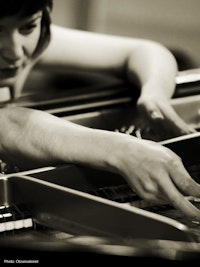The project investigates the interpretative possibilities in early romantic piano music through an understanding of how composers like Beethoven, Schubert, Schumann and Liszt sought to make the piano sound like an orchestra.
The project can be seen as a different approach to the historical interpretation of piano music, wanting to define a new ”identity” for the instrument that is sorely needed to refresh the way we listen to and play the piano repertoire. In contrast to the instruments of the orchestra, it is much more difficult to pin down the keyboard instrument, which has gone through many changes throughout the centuries. In the Baroque era, it was part of the basso continuo group before it became furniture together with the string instruments in Romantic-era chamber music. In much of the music of the 20th century, we see the piano ”reduced” to an instrument of the percussion section, together with the celesta and the harp. This later development, together with the digitalisation of music, has made it more and more difficult to recreate the imaginativeness and subtlety required for a true interpretation of classical and romantic piano music. The richness of the instrument was actualised through the works of the greatest geniuses of Western music. The possibilities of the instrument are inexhaustible, yet in the concert halls of the world today, the sound of the piano has become more sterile and standardised than ever.
Franz Liszt's transcriptions of Beethoven's symphonies are central to the study, as well as the original piano solo works of Beethoven, Schubert and Schumann. The study of conducting, as well as the different instruments of the orchestra, will also be an important part of the study.
Documentation
Artistic result
Concerts at NMH on 9 and 10 May 2019.
Repertoire:
- Johann Sebastian Bach: Consert i D major (after Vivaldi)
- Johann Sebastian Bach: Italian concert in F major
- Igor Stravinskij: Serenade in A major
- Igor Stravinskij: Three movements from Petrusjka
- Franz Liszt: Ouverture from Tannhäuser (after Wagner)
- Franz Liszt: Sonata in h minor
Reflections
Text: "Det orkestrale klaveret – orkesteret som metafor for utforskning av klaverklang."
The written part of the project is documented in NMH's digital archive Brage (text in Norwegian)

